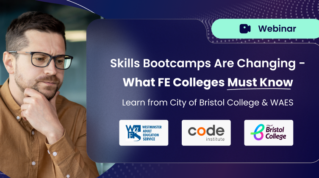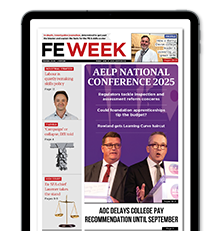The majority of my teaching career has been within a mainstream secondary setting as an English teacher and Head of Department. Two years ago, I was lucky enough to join Harrison College, a college which supports students with special educational needs and disabilities (SEND) – mainly, but not exclusively, for students who have an Autism Spectrum Disorder (ASD) diagnosis.
It soon became apparent to me that developing literacy skills was going to be key to support our students to succeed.
For my first day teaching, I was fully prepared to deliver a ‘mainstream’ lesson to students; quickly I became aware that that was not going to work. Delivering English functional skills would provide our students with a valuable qualification, but that alone would not help them in the world of work.
For some, school had been a challenge, and, for a few, school had not been an option! We had students who had spent several years out of the classroom, and they required more than an examination to make them ‘employable’.
As part of the core study programme, the college introduced two new strands to the English/employability curriculum: ‘literacy in the workplace’ and ‘effective communication’.
All students access ‘literacy in the workplace’. This subject takes English skills (writing, reading, speaking, and listening) and transfers the application of those skills to a work-based focus. Working cross-curricula, ‘literacy in the workplace’ is able to support all students on their journey into work by delivering examples of real-life scenarios and responding appropriately.
One project that we are currently covering with our year 1 students is the ability to identify key information and prepare an email, report, and/or a presentation for an employer. Even though some students have their English grade 4+ or equivalent, they are required to take part in this lesson; Skills can become rusty, and for some of our students whose lessons were affected by Covid, their centre-assessed grades do not fully reflect their knowledge.
Our course is very much focused on life after college
When the employability team are exploring internships for our students, we found that employers positively responded to the fact that literacy hadn’t ended just because school had and that by increasing the length of time studied and focusing on the employability benefits, we are helping students make the leap from classroom to employment.
Within our college, we have a small group of students who struggle with their literacy more profoundly than others. Their needs are more complex, and their attendance may have been more sporadic. For one reason or another, these students require something more to help them bridge the gap and prepare for work. ‘Effective communication’ is a method for us to work with the students and not only improve their communication but also their confidence.
The course is very much focused on life after college and employment; all lessons aim to provide students with the skills they need. At the beginning of the year, we began by looking at bias and fake news – some of our students are quite naïve and believed everything they heard or read.
We unpicked several news articles and identified the impartiality/partiality of each whilst discussing the purpose. But why did we do this? The link was once again made to the workplace. Imagine if you are asked to identify information for your line manager, or you need feedback from your colleagues. Is everything you are told always accurate? What could influence responses?
After the Christmas break, we are moving on to appropriate workplace conversations. Although this will be challenging for some (they don’t always like to speak), we will reinforce the importance of this skill and how beneficial it will be when they leave college and enter the world of work.
Literacy is not just an issue for small pockets of students. Nationally, we are facing a literacy crisis. To make a difference, we need to collectively ensure that literacy isn’t something that just belongs in a classroom.













Your thoughts